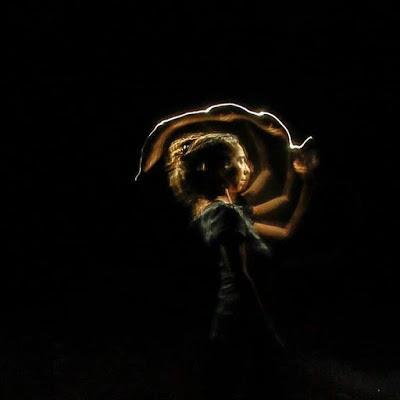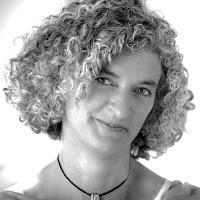
Circle of Light by Melina Meza
This week and next I'll be posting excerpts from yet another interview from the never-written book on Savasana that I was—at one time—working on with my friend yoga teacher Leslie Howard. Back in 2008, Leslie did a good long interview with one of my favorite teachers, Roger Cole,. Let’s start today with their conversation about the benefits and importance of Savasana.And speaking of Savasana, this will be our only post this week, as we're on vacation. Even bloggers need to take a rest. —Nina
Leslie: What is Savasana and how does it differ from just lying down?
Roger: The first difference is intention. When you lie down, you intend to be conscious, be aware, and be present. Lying down the mind tends to drift. So with your intention in Savasana comes the alignment—you get your physical body set up so you can be still and consciously observe your thoughts. Your intention is a type of meditation.
Leslie: What are the benefits of Savasana and why is it such an important pose?
Roger: Part of it is physical and part of it is mental. But let’s just talk about what happens in your brain. You are processing impressions—the mind is doing things, observing things, or observing the results of your doing things, or memories are already in the mind while minimizing new input or effort. When you are in Savasana, we actively stop actively working in the world muscularly, and if our mind is set right, we can observe what is in the mind. It’s not that we stop processing—the mind is always going—but it’s going in a way that doesn’t require this executive function in the brain (the part of you that says, now I must do this , now I must do that). It doesn’t involve “I” at all. It’s an egoless watching, and with that I think what happens physiologically is that information gets processed—connections between nerve cells that need to be strengthened, connections that aren’t used much tend to diminish—so we actually change the brain patterns or they change or reorganize themselves.
I like to think of the impression of a forest, an ancient forest. It has been there for so long—holding still for so long—that everything is sort of coming into its own balance without anyone directing it. And so our own mind—if we just leave it alone—will come into its own equilibrium. We stop pushing it around, adding things to it. So a lot of the benefit of Savsasana is allowing the time to for the process to take place.
It's also restful for the body; you give your heart and your muscles a chance to recover. Internal recovery function is analogous to what is happening in the brain—think of cells healing themselves as an information process. The brain is organizing proteins, reestablishing them, getting rid of waste. So it’s a rest period for the body and a reorganization period for the body.
Leslie: Is there an ideal time of day and duration for Savasana?
Roger: If I had to give a number I would say 15 minutes AT LEAST, and I think longer is actually better. If you stay in classical Savasana for say more than 20 minutes, things start to get uncomfortable, the back of your head gets uncomfortable, your arms by being straight get uncomfortable and possibly also the back, depending on how tight your hip flexors are. It tends to arch the back.. Judith Lasater will set up Savasana with the arms bent, support behind the head, knees slightly flexed, and leave you there for an hour. If you can stay in Savasana for an hour, that takes you to a whole other level. Which is a wonderful thing to have happen. Now, we should talk about sleep because I am a sleep scientist. So I have my particular point of view on sleep in Savasana. Regardless of the intention to stay awake, people do drift off to sleep. If the conditions are set up for sleep, people will fall asleep. The primary condition we all suffer from is not enough sleep in our daily lives. So we are all running around in a “sleep debt.” It’s like if you are hungry, you are going to eat, and when you are sleepy, you are going to sleep. It is an involuntary process. Almost any adult that is put into a dark room and told to lie in bed for 40 minutes and stay awake will fall asleep. I think a lot of sleeping goes on in Savasana, so even a small amount of sleep refreshes them enough so that they can actually practice the Savasana well. Of course, it’s also possible to go completely out.
Leslie: When you have a student that is sleeping do you let them sleep, and if you have to wake them up how do you do it?
Roger: My feeling is they need to sleep. Sleep first, then do your Savasana. To avoid this, firstly, get enough sleep or take a nap and then do Savasana. Don’t do Savasana right after getting up due to sleep inertia (left over sleepiness). Usually 10 or 11 in the morning is an alert time a day for most people where they haven’t been awake long enough to really get sleepy.
If you want an alert Savasana practice it in the morning; if you want to fall asleep in Savasana do it in the afternoon. In the evening it is a mixed bag because on the one hand you have been awake all day. On the other hand you have been awake all day and your body’s clock is alerting you. So your body clock has its strongest alerting effect in the evening, and if you have had enough sleep that usually overcomes the sleepiness and you are wide awake at 8 or 9 o’clock in the evening. But if you have a sleep debt, then you are going to fall asleep. The evening is a mixed bag but mid-afternoon most people will fall asleep in their Savasana. So if someone falls asleep in a class situation, and they are not snoring or disturbing everyone, I just leave them. If they are disturbing the class then I will have them rollover and do something face down or a forward bending posture because people are less likely to sleep in one of those positions.
Leslie: When you are approaching someone that is disturbing the class, how do you wake them up without startling them?
Roger: I try not to startle people. The first thing I do is walk past their head and often they hear me walking. That sound is a subtle noise and that often wakes them up. If that doesn’t work I might try just tugging their blanket. I try whatever I can not to jar them.
Leslie: Do you always talk your students through Savasana?
Roger: No, I usually don’t. I usually put people in the pose and then let the pose do the talking. Now I do have a story about that. I had a student once that came up to me and said I’m fine in Savasana until you stop talking and then I essentially start to freak out. When you are talking I go along and relax, but when you stop talking then I go to a place in my mind that I really don’t like and it’s very disturbing. So probably if one person told me that there are likely others that have had that experience and haven’t told me. But I am pretty non-directive. My whole approach with asana and Savasana is the postures are designed to create an effect. And if you do the postures well, the breathing that you need to do comes in the posture and the Savasana just comes naturally. So my ideal savasana doesn’t need any instruction.
Leslie: Is that presupposing that the student is more advanced?
Roger: No, it's not. It is not presupposing anything about the student except that they are human, because my belief is if you get the right sequence of postures for that person at that time, the right posture set up the right way. The intention is still there. So I say we are going to lie still now with initial instruction. Or, if the people have been coming to my class for a while, I may not even give instructions because they know my instruction intention is that they are going to lie there and be awake and very, very relaxed and whatever happens happens. And you are free, your mind is free to think of whatever you want without anyone’s directions. The only thing that makes it this practice is that you are going to stay there in the pose.


Subscribe to Yoga for Healthy Aging by Email ° Follow Yoga for Healthy Aging on Facebook ° Join this site with Google Friend Connect

